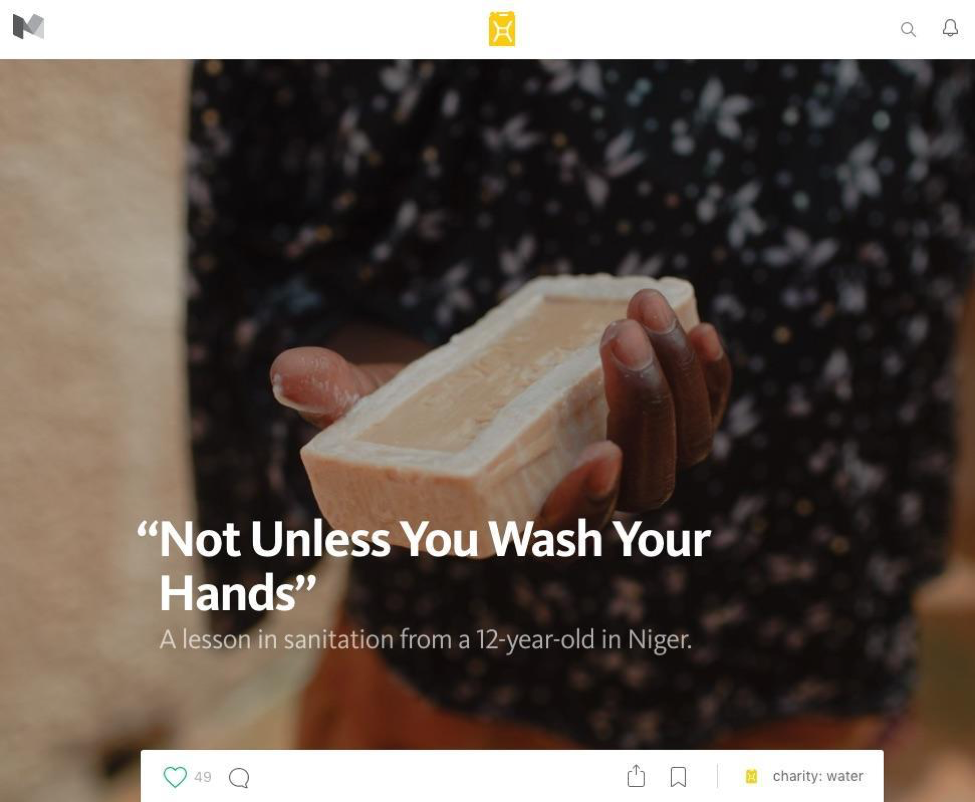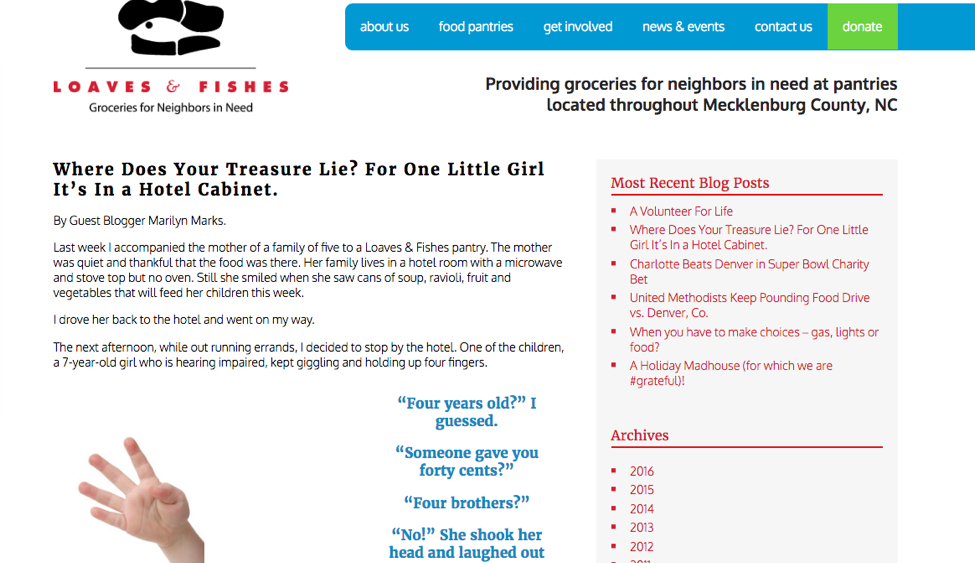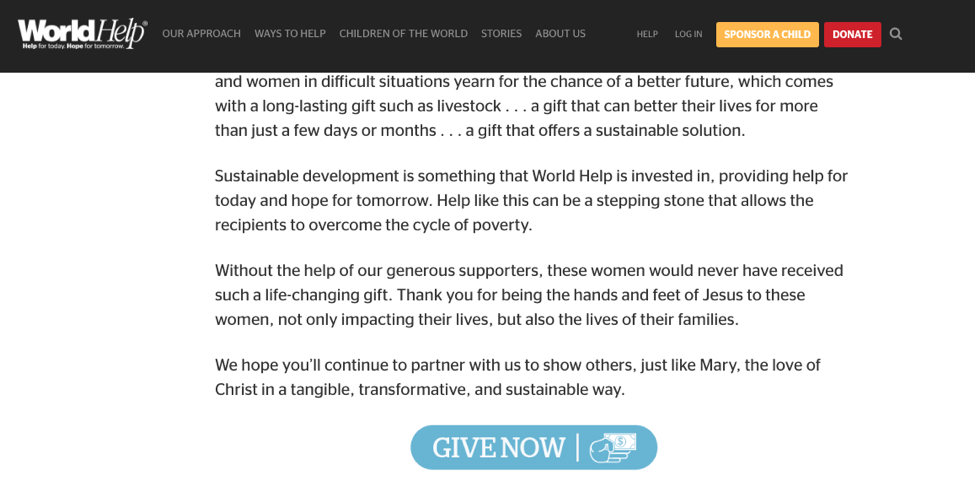
No matter the industry, marketing professionals know that appealing to the “buyer” (donor, client, member) takes a whole lot more than a snazzy logo and nice website. Especially for nonprofits, one of the best ways to attract and engage audiences is with compelling stories.
Data-driven statistics and reports are great tools to use when discussing the results of a project, but if you want to mobilize an army of donors, members, and volunteers, then you need something that forms a deeper connection—your story.
A good story puts a face behind your mission by describing not just what your organization does, but why you do it. This creates the emotional responses that trigger your audience to take action.
By including the five story elements listed below, you can bring like-minded individuals together to rally around the change you’re making in the world.
What to Consider When Developing Your Nonprofit's Narrative
1) A Relatable Character
Start your story by introducing the main character so that your audience can anchor the rest of your narrative to someone or something. This character (protagonist) isn’t necessarily an individual, and can be a family, organization, association, community, school, or even an animal that serves as the “face behind your organization.”
You want your protagonist to be someone or something your audience can connect with, so it stands to reason you should start by understanding your audience. Who do you hope to reach with your story?
When defining your audience, address these two questions:
- What characteristics does your target audience have? Are they donors, volunteers, members, or advocates? Also, consider demographics such as age, income level, and occupation.
- What does your intended audience care about and what motivates them to take action? Pinpoint their hopes and dreams, interests, and values. What might keep them up at night with worry, or inspire them to get involved?
Once you know who you are writing for, find a real or fictitious character that speaks to your audience through similar demographics, hopes and dreams, or pain points and problems.

For a great example of a relatable character, check out this story by charity: water. Hadjara, the protagonist, is a young, educated girl struggling with a basic necessity—clean water.
The audience can relate to her as a character because she, like many people, just wants her family to live a healthier life.
“Like the other students in Sargane Village, 12-year-old Hadjara learned about the importance of handwashing when the school first received clean water. Which meant that she came to understand — perhaps before many others in the community came to understand — that although clean water was making her family healthier, clean hands and a sanitary environment were equally important. That evening, as she was proudly washing her hands in preparation for dinner, she questioned her father — who had begun eating without washing his hands first.”
You want your audience to see themselves, or someone they know, in the protagonist’s shoes.
When writing your story, spend time fine tuning your main character or characters based on who your organization stands for, and provide enough information for the audience to understand and relate to them.
2) Emotion
A main focus of your story should be to help your audience relate to what the protagonist is feeling so they take action.
Do you want them to feel angry about an injustice, or maybe hopeful about a solution? The words you use will set the stage for action later on, so choose wisely based on your audience and cause. Try incorporating one of these emotions into your compelling nonprofit story to start with:
- Awe - Invoke a sense of wonder and rarity to get your audience feeling transformed by what they’ve read.
- Joy - Whether it’s a feel good story or a sense of humor, audiences appreciate and respond when reading something that brings them joy.
- Urgency - Tap into the energy that this emotion creates and motivate your audience to take action.
- Sadness/Despair - Audiences respond less positively to a sad story, but that doesn’t mean you should avoid it. Use a character’s despair to introduce hope.
Richard’s Story, featured on the Alzheimer’s Association website, includes a great emotion-inducing statement that leaves the reader with feelings of hope and inspiration.

“After regaining equilibrium, I made a conscious decision to not put off exploring things that have been on the "to do" list for years.”
For your nonprofit's story, use words or phrases that inspire your constituents to take action. You've created a relatable character, and now you have to hook your audience with emotion.
3) The Problem
To make a story compelling, your character’s problem should tie back to your nonprofit’s mission. This isn't to say you should just have a pity-party. Rather that your issue should be relatable and solveable. Your audience doesn’t want to feel bad for your protagonist, they want to feel connected.
Share not just the problem, but also your protagonist’s personal experience to evoke empathy in the process. Empathy can arise from a number of emotions. Take this example from Loaves and Fishes.

“She jumped to the refrigerator and opened the door, rubbing her tummy and silently saying, “More Food!” Then she leapt on the counter, opening every cabinet door, displaying cupboards full of food. She continued to rub her stomach and giggle…”
The audience learns about the struggles of this young girl through her actions. But, we don’t just feel sorry for her, we feel connected to her journey because the storyteller humanizes the problem.
Explain how the origin of the problem your protagonist is up against, and how it affects their day-to-day life.
4) Solution
Your story isn’t just about the protagonist and their problem, it’s also about the solutions your organization provides. Describe the work that your nonprofit or association does to help people like your main character, highlighting facts such as the number of people dealing with the same issue and how your organization is making a direct impact.
World Bicycle Relief uploaded this highly impactful story titled “Ethel’s Dream.” In it, the audience learns about Ethel and her struggles to get to school every day. The bicycle in this story was literally and figuratively a vehicle for a better life, and the video shows viewers how the nonprofit helped supply it.
Connect the protagonist to the services of your organization to educate your audience on the scope of the problem and inspire them to be part of that solution.
5) Call to Action
You have concluded your story by linking the protagonist with your organization, but you’re not done yet. Your audience is inspired, but may not know what to do with all that motivation. Give them a clear directive with a call-to-action (CTA).
Your (CTA) will depend on your organization's goal, but should always be action-oriented. Some common call to actions include:
- Donate - Giving money to your organization
- Volunteer - Giving time to your organization
- Advocate - Publicly supporting or recommending an organization, policy, or person
- Fundraise - Fundraise: Raise funds through an event or fundraising site
- Subscribe - Signing up to receive publications such as an email newsletter
Here’s an example of a call-to-action from World Help.

“We hope you’ll continue to partner with us to show others, just like Mary, the love of Christ in a tangible, transformative, and sustainable way.” GIVE NOW
World Help encourages the reader to get involved by partnering with them to create change. They reinforce their organization’s mission and provided a way for the audience to take immediate action. The page features a donate button (“GIVE NOW”) that uses direct language and stands out with bold colors and fonts.
For your story, choose the right language that works with your audience, matches your story, and that has the potential to produce results. Be clear, concise, and give your audience the means to act immediately.
In Summation
Now’s the time to get started on putting together your nonprofit's story. Brainstorm ideas with your coworkers and peers about what you want to share, and then map out your narrative using the five elements from above:
- What type of character will your audience relate to?
- What is the emotion you want the audience to feel?
- What is the problem you are trying to solve?
- What role does your organization have in the solution?
- What action do you want people to take after reading the story? How can the reader get involved?
The content your organization shares can be a powerful tool to rally people around your cause and spark action -- what stories do you have to tell?
from HubSpot Marketing Blog http://blog.hubspot.com/marketing/5-elements-of-a-compelling-nonprofit-story
Via http://blog.hubspot.com/marketing/5-elements-of-a-compelling-nonprofit-story

No comments:
Post a Comment